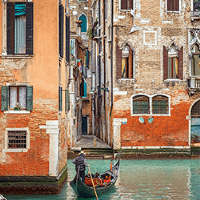Second homes
High stock levels are helping create a buyer’s market
Stock levels are high in the prime second home market, creating a buyer’s market. Prices are around 30% down from their 2008 peak and a greater willingness to price properties accurately has helped to increase sales. A growing trend is to ‘try before you buy’, with rentals of three to six months available to prospective buyers.
Most international buyers are drawn to Italy’s heritage, natural beauty and quality of life. Some 74% of prime property buyers favour historic properties, and those renovated to a high standard are most in demand. Views are important, as is access to a town.
Europeans comprise the bulk of international buyers. Germans and Swiss are particularly active in the north of the country, while Dutch, Belgians and those from the Nordics are buying, too.
In spite of Brexit uncertainty and weak sterling, British buyers are present, some actively seeking euro-denominated assets. British vendors who intend to repatriate funds are in a strong position.
Americans have been mobilised by the strong dollar and are a growing force. Buyers from India, Singapore, Hong Kong, China, Australia, New Zealand and South Africa are present, but in smaller numbers.
Signs of growth
Challenges persist, but Italy’s economy is forecast to rise
Italy is the eurozone’s third largest economy, and the eighth largest in the world. It is a major exporter of pharmaceuticals, cars, oil and vehicle parts. It is the world’s second largest exporter of wine by volume, just behind Spain.
Following the eurozone crisis, Italy’s economy is now returning to growth and is forecast to rise by 1.4% in 2017. Modest recovery has been driven by domestic demand, retail sales and, recently, industrial output, which is on track to record double yearly growth.
Italy is the fifth most-visited country in the world and expected to host a record number of tourists in 2017. Reflecting rising demand for city breaks, the fastest-growing tourist markets are Milan, Verona and Rome, where tourists are up a combined 17% in the last five years.
Challenges persist. Government debt stands at 133% of GDP – higher than Portugal, but lower than Greece. Unemployment stands at 11.3% (forecast to fall to 10.7% by 2019) and youth unemployment is high, at 37%.
.jpg)
.jpg)
.jpg)
.jpg)
.jpg)
.jpg)


.png)